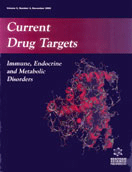Abstract
Over the last several years, a great level of interest has rallied behind understanding how the pivotal kinase, 3-phosphoinositide dependent kinase 1 (PDK1) is regulated. PDK1 phosphorylates and activates members of the AGC kinase family shown to be activated downstream of phosphoinositide 3-kinase (PI3K); however, the functional dependency of PDK1 on PI3K for activation of its targets is less clear. The PI3K signaling pathway mediates numerous cellular responses upon growth factor and hormone stimulation. Specifically, PI3K signaling influences many of the metabolic and mitogenic functions of the anabolic hormone, insulin. Thus, the regulation of PI3K and its downstream targets by insulin has become an important topic for investigation. Given its central role as the kinase upstream of those signaling pathways linked to PI3K, the regulation of PDK1 by insulin and other factors is at the height of many of these investigations. Current theories on PDK1 regulation propose substrate conformation and subcellular localization as the primary mediators of PDK1 function. The array of PDK1 substrates suggests, however, that in cells PDK1 may be more tightly regulated. Recent data support phosphorylation as a potential regulatory mechanism that may play an additional role in directing the specificity of PDK1 towards its physiological substrates. The combination of these regulatory mechanisms along with the potential for multiple PDK1 isoforms with select tissue distribution may contribute to the diversified actions of insulin signaling. The targeting of these various aspects of PDK1 regulation may provide for novel therapeutic treatments for diseases such as diabetes and cancer.
 4
4


















